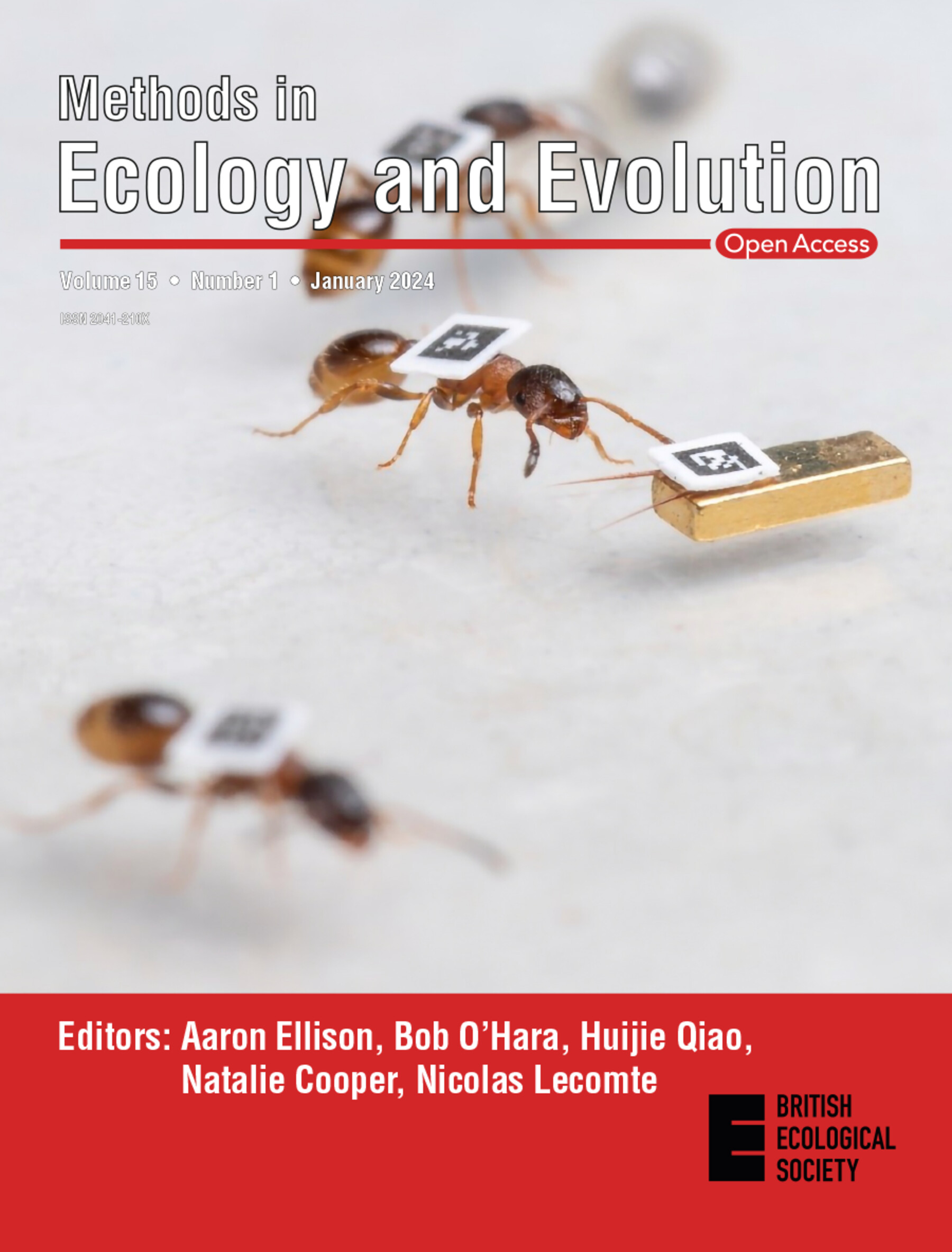The Acoustic Index User's Guide: A practical manual for defining, generating and understanding current and future acoustic indices
IF 6.3
2区 环境科学与生态学
Q1 ECOLOGY
引用次数: 0
Abstract



声学指数用户指南》:定义、生成和理解当前及未来声学指数的实用手册
生态声学(Ecoacoustics)是一门研究环境声音的学科,是一门迅速发展的学科,它提供了从单个生物到整个生态系统的生态洞察力。在过去的 15 年中,方法论取得了长足的发展,简化了从录音中提取生态信息的过程。其中一套广泛使用的方法是声学指数,它对音频记录中的频谱、时间和振幅模式进行数字总结。目前,每种指数的具体背景、方法和旨在概括的声景模式都有多种来源。重要的是,指数计算的细节有时很少,使用户难以理解指数值是如何产生的。理解上的差异可能会导致声学指数的误用或虚假结果的报告。这妨碍了生态推断和可复制性,并阻碍了这些工具在保护和生态系统监测方面的应用,而这些工具本来是可以提供有用的见解的。在此,我们介绍《声学指数用户指南》--一个交互式的 RShiny 网络应用程序,它定义并解构了八个最常用的声学指数,以促进整个学科的一致应用。我们将声学指数的计算分解为简单易懂的步骤,以便更好地实际应用和批判性地解释声学指数。我们使用一套 91 个示例录音来演示典型的声景模式:其中包括 66 个来自世界各地陆地、水生和地下系统的真实声景,以及 25 个展示典型声景模式的合成文件。我们的解释数字指出了可能反映在声学指数值中的特定声景模式。这个 RShiny 应用程序是一个有生命力的资源;通过与已有指数和新指数的作者合作,未来将增加更多的声学指数。该应用程序还可作为发布新声学指数时所需信息的最佳实践模板,以便作者尽可能广泛地了解和采用其指数。反过来,提高对声学指数的理解将有助于生态研究、生态系统监测和保护管理中有效的假设生成、应用和解释。
本文章由计算机程序翻译,如有差异,请以英文原文为准。
求助全文
约1分钟内获得全文
求助全文
来源期刊

Methods in Ecology and Evolution
ECOLOGY-
CiteScore
11.60
自引率
3.00%
发文量
236
审稿时长
4-8 weeks
期刊介绍:
A British Ecological Society journal, Methods in Ecology and Evolution (MEE) promotes the development of new methods in ecology and evolution, and facilitates their dissemination and uptake by the research community. MEE brings together papers from previously disparate sub-disciplines to provide a single forum for tracking methodological developments in all areas.
MEE publishes methodological papers in any area of ecology and evolution, including:
-Phylogenetic analysis
-Statistical methods
-Conservation & management
-Theoretical methods
-Practical methods, including lab and field
-This list is not exhaustive, and we welcome enquiries about possible submissions. Methods are defined in the widest terms and may be analytical, practical or conceptual.
A primary aim of the journal is to maximise the uptake of techniques by the community. We recognise that a major stumbling block in the uptake and application of new methods is the accessibility of methods. For example, users may need computer code, example applications or demonstrations of methods.
 求助内容:
求助内容: 应助结果提醒方式:
应助结果提醒方式:


